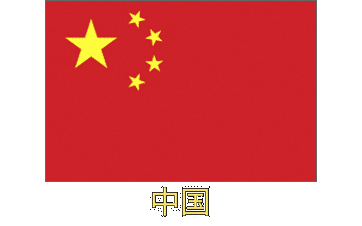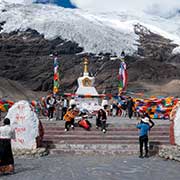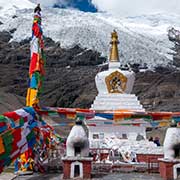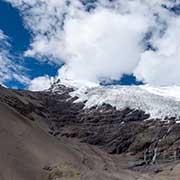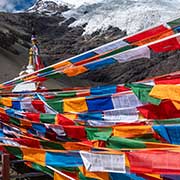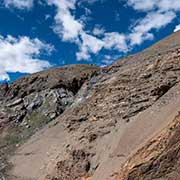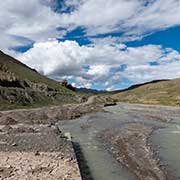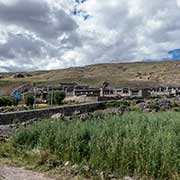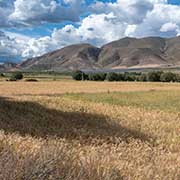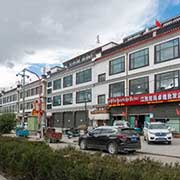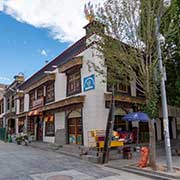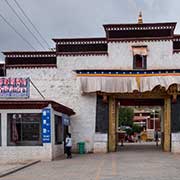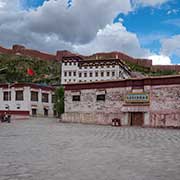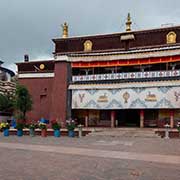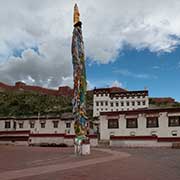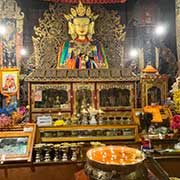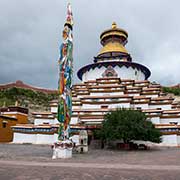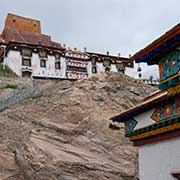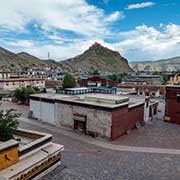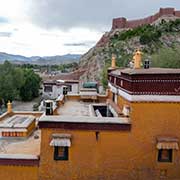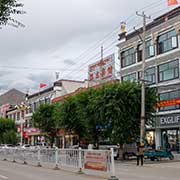Photos from the Korola Glacier to Gyantse, Tibet
From the Korola Glacier to Gyantse
The Karola glacier, on the south face of Mount Nojin Kangsang, is 73 kilometres to the east of Gyantse, with a viewpoint at 4,990 metres above sea level. A “chorten”, Tibetan stupa and thousands of colourful prayer flags indicate that it is a sacred spot. It is also a popular stop for tourists. However, unfortunately, like glaciers worldwide, its size has greatly diminished as a result of global warming.
you may then send it as a postcard if you wish.
Gyantse is located in the Nyang Chu valley and was an important town on trade routes from south Tibet to Sikkim. Before the Chinese annexation, Gyantse was the third-largest town in Tibet after Lhasa and Shigatse. It is still dominated by its fortress, Gyantse Dzong, constructed in 1390 on the southern side of the town; parts of the three-kilometre wall that used to encircle the city still survive.
The Palcho Monastery (or Shekar Gyantse Monastery) is especially notable because of the Pelkor Chöde or Kumbum stupa, a multi-storied aggregate of Buddhist chapels: the largest of its kind in Tibet. It has nine floors, with 108 gates and 76 chapels and shrines and a total height of 32 metres. The chapels are richly decorated with colourful murals; three Buddhist sects are represented here.
Next to the Kumbum is the Assembly Hall (“Tsokchen”) of the Tsuklakhang, the monastery’s main temple. It was built between 1418 and 1428 and has three floors with well-preserved murals and images of the fifteenth century. The monastery’s main festival is Saka Dawa, celebrated on 15 April; it commemorates Sakyamuni, the founder of Buddhism.


